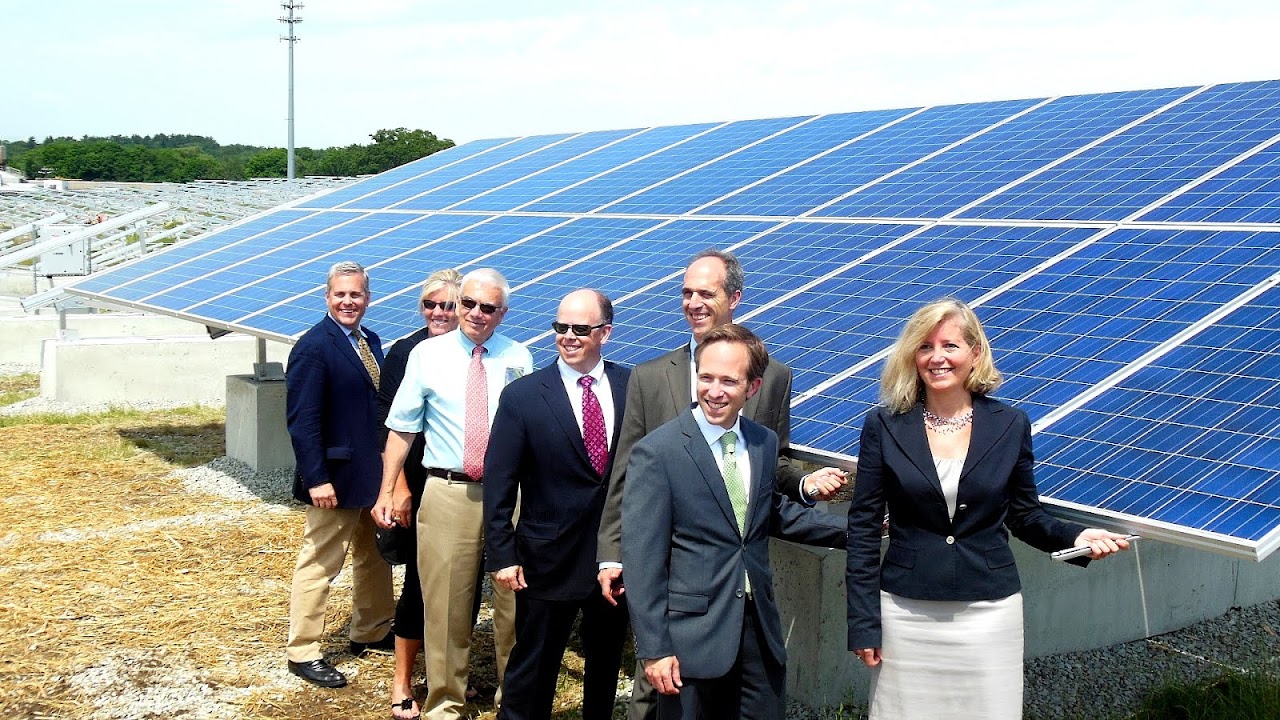
Solar power in Massachusetts has been increasing rapidly, due to a 30% tax grant for installations begun before December 31, 2011, and the sale of SRECs for $0.30/kWh, which allow payback for the system within 5 or 6 years, and generating an income for the rest of the life of the system. For systems installed after December 31, 2011, and before December 31, 2016, the 30% tax grant becomes a 30% tax credit. There has been an appeal to the Congress to extend the 1603 program, the grant program, for an additional year.
Net metering is available with no aggregate limit for systems less than 10 kW, or three phase connected systems less than 25 kW. Larger systems are limited to 3% of total peak load. Approximately 40 municipalities are exempt from net metering. Of these, most choose not to offer it.
The first solar park in the country is the 100 kW array installed in 1981 at Beverly High School. The largest campus to have a solar program is Harvard's 555 kW array.
New England's largest privately owned solar array is the 4.5 MW Westford Solar Park, completed in April 2012. Almost every town and city in Massachusetts has a solar installation within its boundaries. The town of Harvard, Massachusetts has the most solar installations with 75 planned, of which 21 have been installed. Holyoke is home to two arrays which total 4.5 MW which were completed on December 20, 2011. A 1.8 MW solar farm in Pittsfield was completed in 2010. A 5.75 MW solar park in Canton was completed in 2012. Two 6 MW solar parks are being built, one in Berkley, and the other in Carver. As of August 2012, a total of 129 MW has been installed in the state.
State officials had set a target of installing 250 MW of solar PV statewide by 2017 and in May 2013 upped the target to 1,600 MW by 2020 as the 250 MW goal had been met four years ahead of schedule.

Maps, Directions, and Place Reviews
Statistics
Potential generation
The average insolation in Massachusetts is about 4 sun hours per day, and ranges from less than 2 in the winter to over 5 in the summer.
Massachusetts electricity consumption in 2010 was 57,123 million kWh. The state is a net importer of electricity, having only generated 42,805 million kWh. Massachusetts has the potential for generating 799,344 million kWh/year from 184,076 MW of offshore wind farms and 82,205 million kWh from 51,568 MW of photovoltaic solar farms, and 26,000 million kWh (47% of consumption) from 22,500 MW of rooftop photovoltaics.
Installed capacity
In 2016, the net metering limits have been reached in all utility areas, causing over 240 MW in over 550 projects to be delayed.
Source of the article : Wikipedia








EmoticonEmoticon